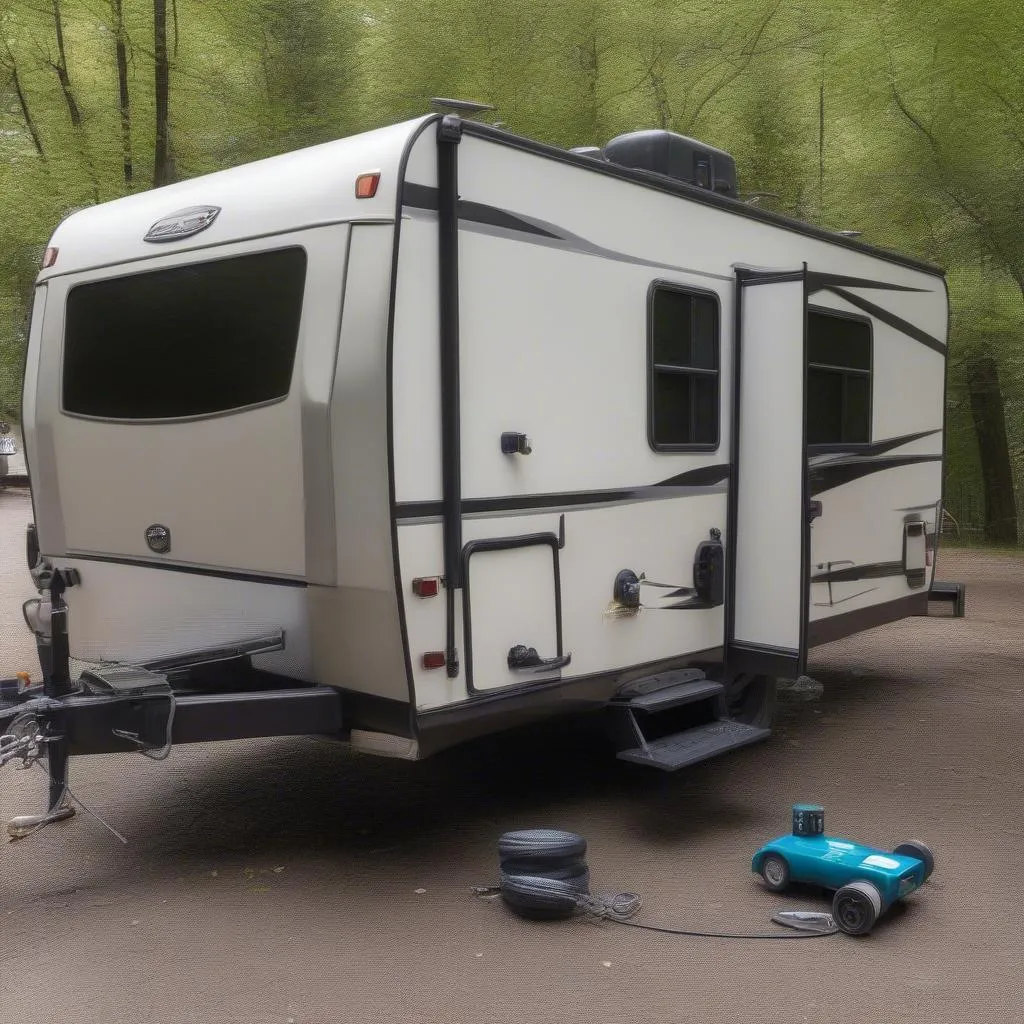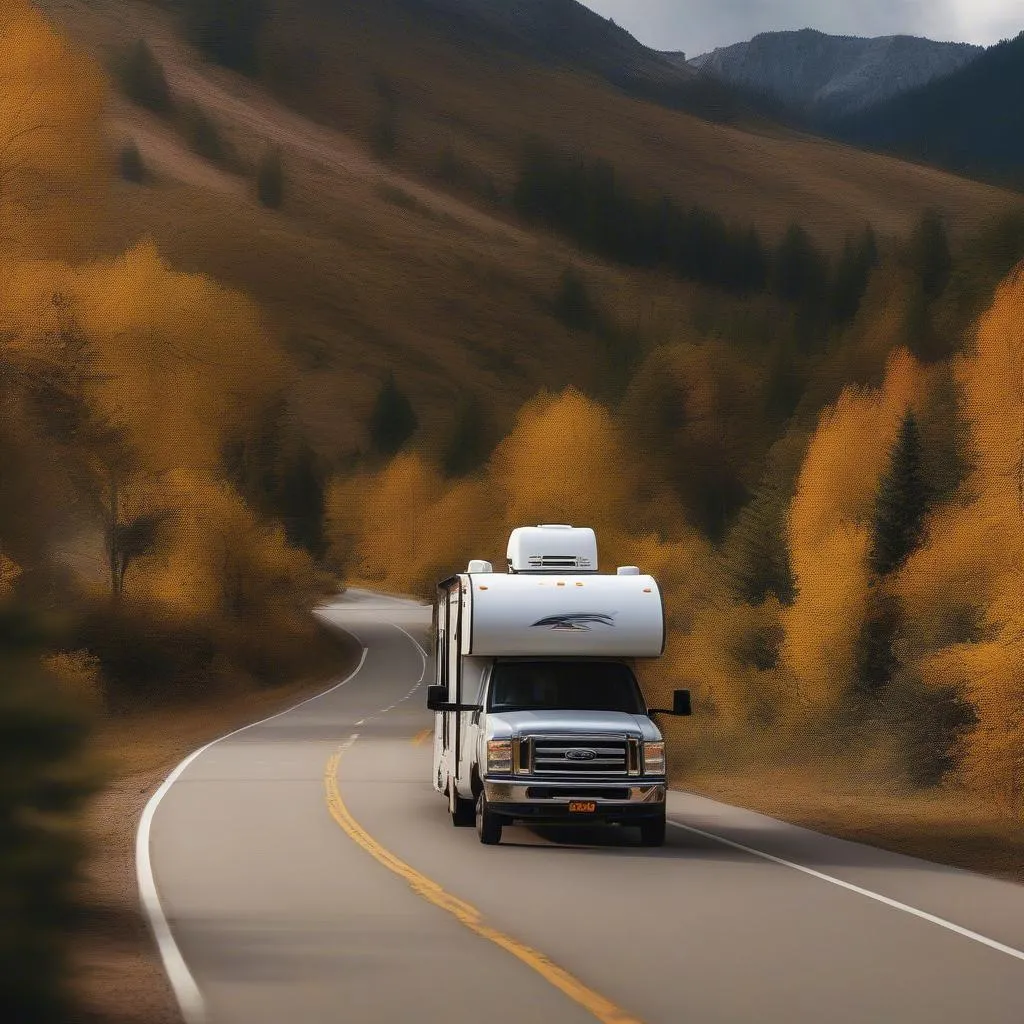Picture this: the open road stretching before you, the promise of adventure in the air, and the comfort of your own travel trailer in tow. But before you can embark on that epic road trip, you need to master the art of hooking up your travel trailer to your tow vehicle.
Don’t worry if the thought seems daunting. This comprehensive guide will walk you through each step, ensuring a smooth and safe connection. Just like finding the perfect campsite, practice makes perfect!
Understanding the Basics
Before diving into the nitty-gritty, let’s get familiar with the essential components involved in the hook-up process:
1. Hitching Components:
- Hitch Receiver: This part is mounted on your tow vehicle’s frame and receives the trailer’s coupler.
- Coupler: Located on the trailer tongue, the coupler latches onto the hitch ball for a secure connection.
- Hitch Ball: This spherical component sits atop the hitch receiver and locks into the coupler. Make sure you choose the right size (1 7/8″, 2″, or 2 5/16″) based on your trailer’s weight.
- Safety Chains: These chains act as a backup safety measure, connecting the trailer frame to the tow vehicle in case of accidental disconnection.
- Weight Distribution Hitch (Optional but recommended for heavier trailers): This system helps distribute weight evenly between the tow vehicle and trailer, enhancing stability and control.
2. Electrical Connections:
- Trailer Connector: This plug, typically located near the coupler, transmits lights and brake signals from your tow vehicle to the trailer.
- Tow Vehicle Connector: Your tow vehicle should have a corresponding connector for the trailer plug.
Step-by-Step Guide to Hooking Up Your Travel Trailer
Now that you’re familiar with the key players, let’s connect everything:
1. Preparation is Key:
- Park your tow vehicle and trailer on a level surface. Engage both parking brakes.
- Check tire pressure on both your tow vehicle and trailer.
- Ensure your trailer jack is high enough for the coupler to clear the hitch ball.
2. Aligning for Success:
- Slowly back your tow vehicle towards the trailer, ensuring a straight alignment. If you’re a beginner, having a spotter guide you can be incredibly helpful.
- As a seasoned traveler once shared, “Aligning your tow vehicle and trailer is like finding balance in life – it takes patience and precision.”
3. Making the Connection:
- Lower the trailer coupler onto the hitch ball using the trailer jack. You should hear a distinct “clunk” as they connect.
- Securely latch the coupler by lowering the handle. Double-check that it’s locked.
- Attach the safety chains to the hitch receiver using a crisscross pattern, ensuring enough slack for turning but not enough to drag on the ground.
4. Connecting the Lifeline:
- Connect the trailer’s electrical plug to the tow vehicle’s connector.
- Ensure all trailer lights (brake lights, turn signals, and taillights) are functioning correctly.
5. Final Check: A Must-Do!
- Raise the trailer jack until it’s no longer bearing weight on the hitch.
- Test the trailer brakes.
- Walk around your setup, double-checking all connections and safety features.
 Travel Trailer Hitch
Travel Trailer Hitch
Travel Trailer Hook-Up FAQs
Q: What is a weight distribution hitch, and do I need one?
A: A weight distribution hitch is especially beneficial for heavier trailers as it helps level the tow vehicle and trailer, improving stability and steering control. If your trailer’s weight exceeds 50% of your tow vehicle’s weight, a weight distribution hitch is highly recommended. You can find more information about choosing the right hitch for your setup on travelcar.edu.vn/how-to-hook-up-sway-bars-on-a-travel-trailer/.
Q: How often should I check my trailer connections during a trip?
A: It’s wise to inspect your hitch, safety chains, and electrical connections every time you stop for gas or a break.
Hit the Road with Confidence
Hooking up a travel trailer might seem intimidating at first, but with practice and attention to detail, it becomes second nature. Remember, safety and stability are paramount, so never hesitate to double-check your setup or seek guidance if needed.
And before you set off on your next adventure, consider exploring the breathtaking landscapes and hidden gems waiting to be discovered. For inspiration and travel tips, visit travelcar.edu.vn – your ultimate guide to unforgettable travel experiences.
 Travel Trailer on Road
Travel Trailer on Road